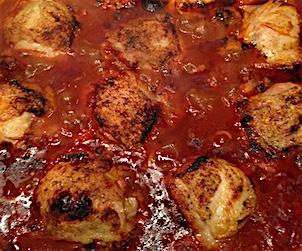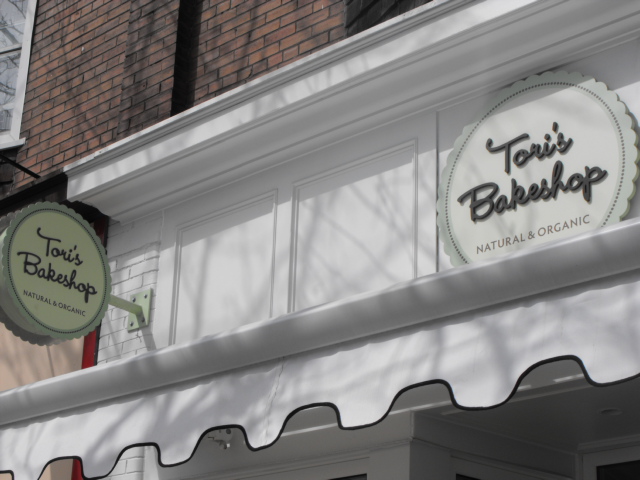by Lorette C. Luzajic
July is National Blueberry Month.
Okay, well, it is in the States. But in Canada, the whole of summer is a berry celebration. We have blueberry festivals in August, but as soon as the summer sun hits us, there are fresh berries all over the country.
Babies love them. Kids love them. Doctors and dieters and nutritionists and pastry chefs love them. Bears love them. Canada’s pride, the humble blueberry, is everybody’s favourite.
As a little girl, when our family went to the cottage, I used to head onto the hot mossy rocks to fill baskets with berries. There is no treat like wild blueberries, fresh picked, and still warm from the sun. It was a bit of work, picking those baby berries, since wild ones can be tiny. But one year, I recall the berries being unusually massive- big plump bursts of blueness bigger than marbles. I would stake out the rocky lakeshores, with my ever-present notebook, jotting down “clues” in my imaginative, solitary Nancy Drew games. One afternoon, I waited patiently in the patches until the sun started to wane, waiting to catch glimpse of a bear and scare myself silly. All the while I stuffed myself on those blueberries until no more could go down the hatch.
I waited in vain that day, much to my parents’ relief. But right now, bears are dining on berries in any habitats that both are found. Indeed, bears love blueberries so much that when the good stuff is available, they often eat them to the exclusion of other treats. In fact, bears will travel over ten miles on an empty stomach to sniff out a prize patch.
Bears know a good thing when they smell it. In a study at Tufts University, the blueberry was the cherry on top, winning the crown over sixty contestants for best antioxidant capability. These little guys pack a wallop of anthocyanidins, phytochemicals that neutralize free radical damage to the collagen matrix. In English, that means the blueberry supports the vein and vascular systems, protecting you from varicose veins, glaucoma, ulcers, and hemorrhoids, as well as deadlier diseases like cancer.
Oxidative stress also destroys your vision and weakens your brain. Blueberries help keep both sharp as tacks. While we have yet to find the fabled fountain of youth, blueberries reduce age-related degenerations and impairments, making the learning capacity and motor skills of aging animals comparable to younger ones. The list goes on: ellagic acid in many kinds of berries blocks the metabolic pathways that lead to cancer. Blueberry tannins reduce inflammation in the digestive tract, helping to heal both diarrhea and constipation. It’s win-win. Blueberries also protect the lining of the bladder from inhabitation by e.coli, the most common cause of bladder infections.
The blueberry’s cousin may be the oldest living thing in the world. The box huckleberry, a flavourless relative, is 13 000 years old, a rare survivor of the last ice age. The discovery of the hearty history of these cousins made headlines in 2002. The blueberry itself is native to North American soil, and the people who were also native to this soil made full use of this wonderful fruit. They ate them fresh, and also dried and pummeled them into powder, which they would then grind into meat.
It may not sound all that appetizing, but long before Survivor or Lost, the native peoples were experts in survival. By drying meat mixed with berries, they created “pemmican,” a kind of jerky that would keep you alive when traveling through wintry or desert climes where food might not be found. The colonists saw the natives eating blueberries, but just as is typical, the white folks found the berries too tart! They didn’t become common to the colonial diet until white sugar became a staple. Horrifyingly, many people still slather sugar onto bowls of berries, in which case we can forget about all those amazing benefits. We didn’t think to cultivate the berry for this reason until not even a century ago, but now blueberry farms are commonplace and North America grows millions of tons of berries for home use and export alike.
The continent’s first peoples also used the blueberry medicinally. Relief for the pains of childbirth was limited in millennia past, and blueberry tea was a mild relaxant and anti-inflammatory. Blueberry tea was sweet enough for the colonists’ wives when it came to this purpose, and they relied on natives for much of their medicine. The healing and nutritional properties of the berry were so profound that the Native Indian people believed that the Great Spirit had sent it to save his children from starvation and disease. The five-point calyx that tops each berry was a sign, and they became known as “star berries.”
So what wonderful ways can you incorporate nature’s bounty into your delicious disease arsenal? Pick ‘em and freeze ‘em while they’re fresh. Don’t miss the blueberry syrup you’ll find homemade in small towns up north. Toss fresh berries on top of plain yogurt, or add them to a bit of cream. Blend ‘em up with some bananas and peaches for a summer smoothie. Make a punch bowl full of blueberry and orange pekoe tea steeped together, add a teeny bit of honey, and chill. You’ll have loads of almost free divine ice tea tomorrow. Put your toddlers into a yard pool, or the bathtub, and let them squish ‘em and eat ‘em. It’s worry free- baby gets all those vitamins, and hosing him off is easy. Pick up homemade, low sugar blueberry jam from a farmer’s market, and use it on pork chops instead of applesauce.
And be sure to choose the bluest orbs, since the deeper and riper the berry is, the more antioxidants and nutrients are present. Remember: the darker the berry, the sweeter the juice. Gobble them to your heart’s content, but leave some for the bears.
 Author, Artist, Poet Lorette C. Luzajic’s website is www.thegirlcanwrite.net. Browse her books at Amazon.ca.
Author, Artist, Poet Lorette C. Luzajic’s website is www.thegirlcanwrite.net. Browse her books at Amazon.ca.








